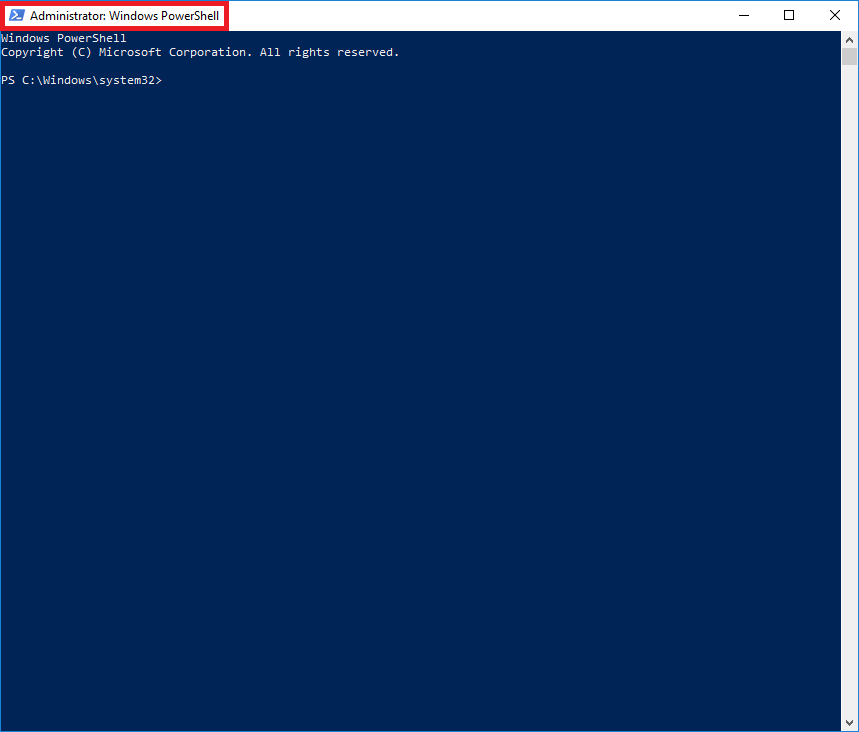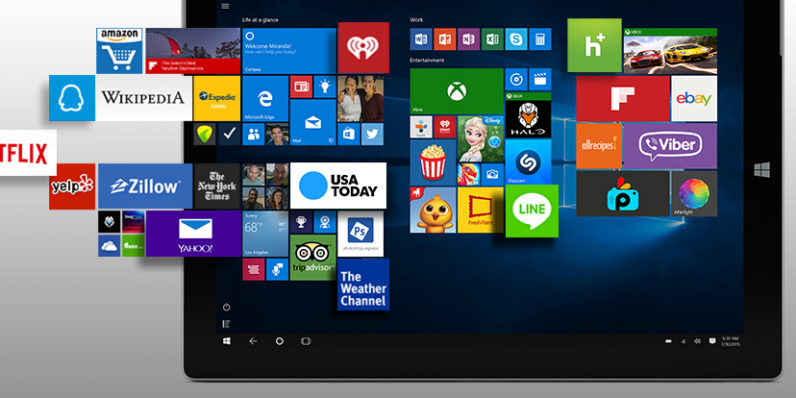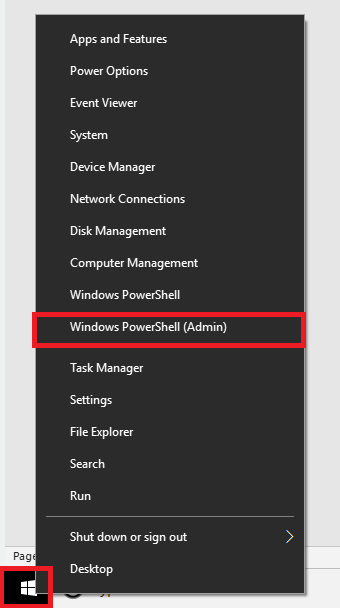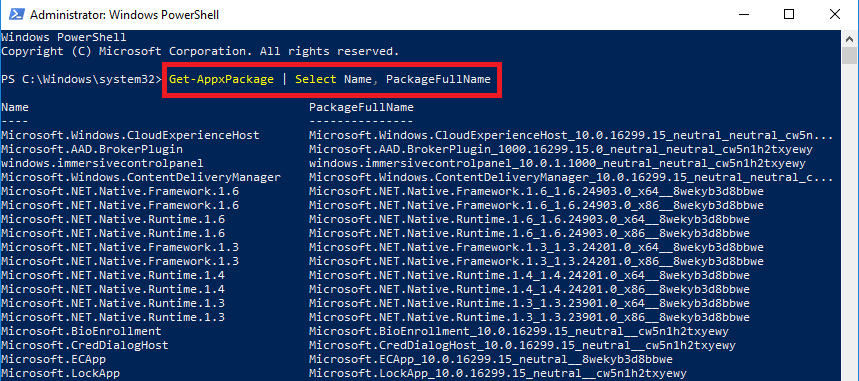Windows 10 is arguably Microsoft’s greatest operating system ever. It’s modern design, universal compatibility, and revised upgrade scheme allowed the operating system to quickly become the new standard.
With Windows 7 soon falling out of support and headed towards the fate Windows XP suffered, many should consider the switch to Windows 10, if you haven’t already. Luckily, the upgrade process is easy, robust, and quick to do.
One of Windows 10’s strongest features are their built-in Apps. These apps are Microsoft certified apps that are downloadable through the Windows 10 Store. Most Microsoft Apps are preinstalled with Windows 10 and are commonly used such as Mail, Calendar, and the Calculator.
As great as these apps are, they run in their own specialized environment and do not function in the same way as a typical application downloadable from the web. Their custom code and environment can sometimes cause an app to misbehave and break.
Unfortunately, broken apps in Windows 10 are all too common and they require specific steps to fix. To help guide you through the process of fixing a broken Windows 10 App, we will be using PowerShell commandlets to uninstall and reinstall an app.
Before we begin, there are two notices to be aware of. The first notice is that a Windows 10 App should not be uninstalled without reason. Some of us may not use the Xbox app, but other Windows 10 services may rely on its existence, such as the Windows 10 Game Bar.
Secondly, the Windows 10 Store is the core component for the Windows 10 Apps. This application can be uninstalled but uninstalling the Windows 10 Store app will permanently break all installed Windows 10 apps and is not reinstallable. The only way to reinstall the Windows 10 Store is to perform a clean reinstall of Windows 10; not a reset or refresh.
How to Launch PowerShell
In an effort to move away from the typical and limited Command Prompt, Microsoft has been utilizing their more complex and powerful commandlets in PowerShell. PowerShell is installed on all versions of Windows 10.
Since all of the steps below require the use of PowerShell, this section will teach you how to open an elevated version of PowerShell. These steps should be performed on Windows 10 1709 and higher. Learn how to check which Windows 10 build you are running here.
1. Right-click on the Windows 10 start icon found in the bottom left.
2. In the popup menu, click on the Windows PowerShell (Admin) option.
3. If a UAC window appears after selecting PowerShell, press the Yes button.
4. PowerShell will now launch in an elevated (Administrator) mode.

It is crucial that all of the steps below are ran in an elevated PowerShell command window. If you do not run the following commands in an elevated window, they will fail and report errors indicating that the process could not be completed.
Uninstalling a Windows 10 App
1. Open an elevated PowerShell window.
2. In PowerShell, type the following command: Get-AppxPackage | Select Name, PackageFullName and press Enter.
3. PowerShell will list all of the currently installed Windows 10 Apps on the PC.
4. From the list, locate the app you wish to uninstall.
5. On a new PowerShell line, type the following command: Get-AppxPackage PackageFullName | Remove-AppxPackage and press Enter.
- PackageFullName should be replaced by the full package name from the list earlier.
- If the package full name is too long, you can use wildcard selectors to uninstall any application found in the wildcard.
- For example:
Get-AppxPackage *officehub* | Remove-AppxPackage
6. A reboot is required after reinstalling an app.
For a faster uninstall of a Windows 10 App, here are the common PowerShell commandlets for certain apps.
To uninstall 3D Builder:
get-appxpackage *3dbuilder* | remove-appxpackage
To uninstall Alarms & Clock:
get-appxpackage *alarms* | remove-appxpackage
To uninstall App Connector:
get-appxpackage *appconnector* | remove-appxpackage
To uninstall App Installer:
get-appxpackage *appinstaller* | remove-appxpackage
To uninstall Calendar and Mail apps together:
get-appxpackage *communicationsapps* | remove-appxpackage
To uninstall Calculator:
get-appxpackage *calculator* | remove-appxpackage
To uninstall Camera:
get-appxpackage *camera* | remove-appxpackage
To uninstall Feedback Hub:
get-appxpackage *feedback* | remove-appxpackage
To uninstall Get Office:
get-appxpackage *officehub* | remove-appxpackage
To uninstall Get Started or Tips:
get-appxpackage *getstarted* | remove-appxpackage
To uninstall Get Skype:
get-appxpackage *skypeapp* | remove-appxpackage
To uninstall Groove Music:
get-appxpackage *zunemusic* | remove-appxpackage
To uninstall Groove Music and Movies & TV apps together:
get-appxpackage *zune* | remove-appxpackage
To uninstall Maps:
get-appxpackage *maps* | remove-appxpackage
To uninstall Messaging and Skype Video apps together:
get-appxpackage *messaging* | remove-appxpackage
To uninstall Microsoft Solitaire Collection:
get-appxpackage *solitaire* | remove-appxpackage
To uninstall Microsoft Wallet:
get-appxpackage *wallet* | remove-appxpackage
To uninstall Microsoft Wi-Fi:
get-appxpackage *connectivitystore* | remove-appxpackage
To uninstall Money:
get-appxpackage *bingfinance* | remove-appxpackage
To uninstall Money, News, Sports and Weather apps together:
get-appxpackage *bing* | remove-appxpackage
To uninstall Movies & TV:
get-appxpackage *zunevideo* | remove-appxpackage
To uninstall News:
get-appxpackage *bingnews* | remove-appxpackage
To uninstall OneNote:
get-appxpackage *onenote* | remove-appxpackage
To uninstall Paid Wi-Fi & Cellular:
get-appxpackage *oneconnect* | remove-appxpackage
To uninstall Paint 3D:
get-appxpackage *mspaint* | remove-appxpackage
To uninstall People:
get-appxpackage *people* | remove-appxpackage
To uninstall Phone:
get-appxpackage *commsphone* | remove-appxpackage
To uninstall Phone Companion:
get-appxpackage *windowsphone* | remove-appxpackage
To uninstall Phone and Phone Companion apps together:
get-appxpackage *phone* | remove-appxpackage
To uninstall Photos:
get-appxpackage *photos* | remove-appxpackage
To uninstall Sports:
get-appxpackage *bingsports* | remove-appxpackage
To uninstall Sticky Notes:
get-appxpackage *sticky* | remove-appxpackage
To uninstall Sway:
get-appxpackage *sway* | remove-appxpackage
To uninstall View 3D:
get-appxpackage *3d* | remove-appxpackage
To uninstall Voice Recorder:
get-appxpackage *soundrecorder* | remove-appxpackage
To uninstall Weather:
get-appxpackage *bingweather* | remove-appxpackage
To uninstall Windows Holographic:
get-appxpackage *holographic* | remove-appxpackage
To uninstall Xbox:
get-appxpackage *xbox* | remove-appxpackage
1. To remove all Windows 10 Apps, type the following command: Get-AppxPackage -allusers | where-object {$_.name –notlike "*store*"} | Remove-AppxPackage and press Enter.
2. A reboot is required after reinstalling an app.
Reinstall a Windows 10 App
1. Open an elevated PowerShell window.
2. In PowerShell, type the following command: Get-AppXPackage -allusers | Foreach {Add-AppxPackage -DisableDevelopmentMode -Register "$($_.InstallLocation)\AppXManifest.xml"} and press Enter.
- This command will run through each Windows 10 App and reinstall them if they are missing. Existing apps will display a red warning message and this can be ignored.
3. A reboot is required after reinstalling an app.
If you do not wish to wait through the entire reinstall of every app, you can opt to reinstall one app at a time.
1. Recall the package full name from the previous section. This time you will require the full name and not be able to use wildcards.
2. In PowerShell, type the following command: Add-AppxPackage -register "C:\Program Files\WindowsApps\PackageFullName\appxmanifest.xml" -DisableDevelopmentMode and press Enter.
- In the above command, change the PackageFullName to the full package name in the previous uninstall section.
3. A reboot is required after reinstalling an app.
© 2018 Justin Vendette



